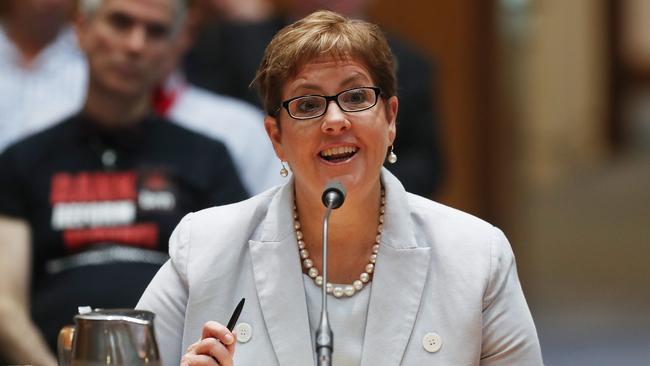No exodus expected as AMP overhauls financial advice model
AMP scraps the longstanding buyer of last resort option for financial advice practices, as it introduces sweeping changes.

Under-pressure AMP says it does not expect a “huge cohort” of financial advisers to leave its ranks as it overhauls its model by raising fees for practices and scrapping the longstanding buyer-of-last-resort option.
AMP Australia’s new leadership team announced the sweeping changes on Monday, saying they marked a “new era” for professional financial advice services, rather than the product-selling focus that had prevailed at the wealth and asset management group.
AMP came under fire at the Hayne royal commission in 2018 for providing shoddy advice and charging fees to customers who were not receiving any services.
Scott Hartley, who was appointed to run AMP’s Australian operations in January, expressed confidence that the latest changes would help return AMP to “a leadership position” in the advice industry. He said incoming group chief executive Alexis George – who starts in the role next week – had been informed of the advice business overhaul and was “supportive of the changes”.
Former CEO Francesco De Ferrari made a series of changes to AMP’s advice model in 2019, including controversially cutting the terms of the buyer-of-last-resort program – the rate AMP pays to buy a practice back from planners seeking to exit.
At the time, it said it was lowering the rate it would pay for financial planning practices from four times recurring revenue to 2.5 times. Mr De Ferrari was seeking to make the business more sustainable as AMP’s earnings suffered from the royal commission’s fallout.
The new model outlined on Monday goes a step further and spells the end of buyback arrangements that have existed for more than two decades on December 31. Advisers can still apply for the program until that date.
AMP shares fell 1.4 per cent on Monday to $1.075.

Citigroup’s sales desk said the announced changes risked “ a rush” on the buyer-of-last-resort program.
“However, AMP believes this is low risk as most advisers that want to leave have already done so … Clearly AMP is setting itself up to serve external advisers as well as internal with these changes,” the broker told clients.
AMP’s advice managing director Matt Lawler wouldn’t provide an estimate on expected adviser departures ahead of the changes, but didn’t expect a flood of exits.
“I’m not going to be complacent about it – we should be nervous about it, because that’s actually a good tension in business,” he added.
Mr Hartley said the AMP financial advice business needed to focus on professionalism and profitability. While AMP didn’t provide a lot of detail on the adviser fee increases, The Australian understands licence services and adviser fees will rise overall after largely being held steady for several years.
AMP is writing to advice practices under the Hillross banner – rather than AMP Financial Planning – regarding individual agreements which specify buyer exit sale multiples, to gauge if owners want to leave under existing terms.
Some of those sale terms are said to be higher than the broad buyer-of-last-resort option.
Across the advice network, the latest changes see AMP hand back ownership of the customer to the planner or practice, which makes it easier for those seeking to leave and take their customer book elsewhere. The new fee model will be phased in from 2022.
Mr Lawler said the changes reflected “another major step in the transformation” of the AMP advice business as it navigated the correction and decline in adviser numbers following heightened industry regulation and the fallout from the royal commission. AMP was now positioning for growth.
“Over the past few years we have worked with our financial adviser network to complete significant reforms, build robust and modern processes and are strengthening our compliance regime,” he added.
“With a lot of that hard work now embedded, it is the right time for AMP and our financial advisers to look to the future. We will be providing access to resources, technology and support to fulfil our two core promises to our financial advisers.”
AMP is also building out the part of its business which allows adviser businesses with their own licence to pay for the group’s services. It has just 12 firms using that so far, as the bulk of practices and advisers trade under the AMP financial services licence.
On Monday, AMP said the new advice strategy blueprint was developed in collaboration with adviser associations.
That follows uproar after the last set of changes to the buyer-of-last-resort program, leading to a class action against AMP.
The Advisers Association Board chairman Craig Armstrong said: “TAA has worked with the new management team in AMP Australia … We believe this model creates a more sustainable business model for our members staying with AMP and supports the shift to the professionalisation.”






To join the conversation, please log in. Don't have an account? Register
Join the conversation, you are commenting as Logout